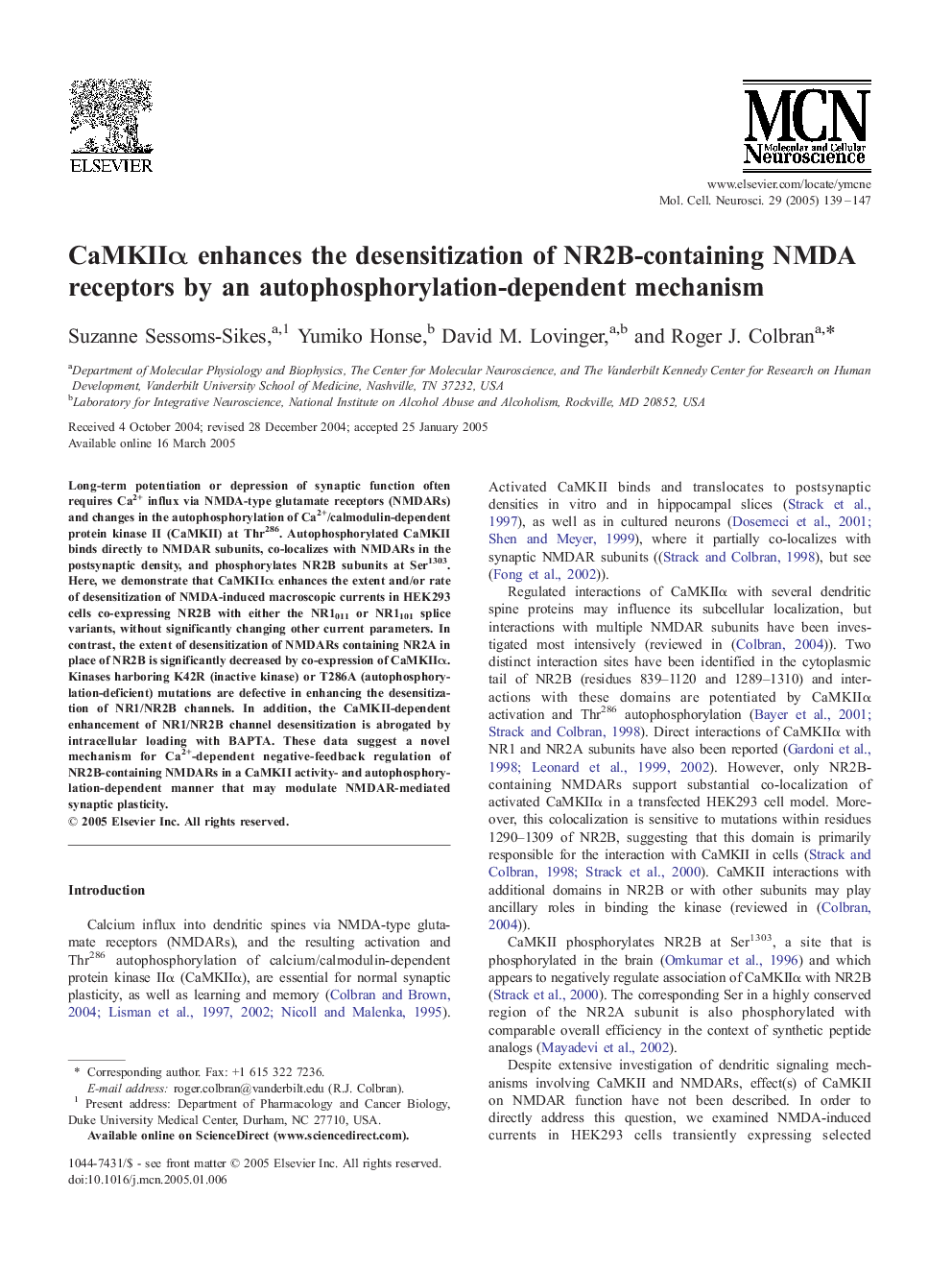| Article ID | Journal | Published Year | Pages | File Type |
|---|---|---|---|---|
| 10956911 | Molecular and Cellular Neuroscience | 2005 | 9 Pages |
Abstract
Long-term potentiation or depression of synaptic function often requires Ca2+ influx via NMDA-type glutamate receptors (NMDARs) and changes in the autophosphorylation of Ca2+/calmodulin-dependent protein kinase II (CaMKII) at Thr286. Autophosphorylated CaMKII binds directly to NMDAR subunits, co-localizes with NMDARs in the postsynaptic density, and phosphorylates NR2B subunits at Ser1303. Here, we demonstrate that CaMKIIα enhances the extent and/or rate of desensitization of NMDA-induced macroscopic currents in HEK293 cells co-expressing NR2B with either the NR1011 or NR1101 splice variants, without significantly changing other current parameters. In contrast, the extent of desensitization of NMDARs containing NR2A in place of NR2B is significantly decreased by co-expression of CaMKIIα. Kinases harboring K42R (inactive kinase) or T286A (autophosphorylation-deficient) mutations are defective in enhancing the desensitization of NR1/NR2B channels. In addition, the CaMKII-dependent enhancement of NR1/NR2B channel desensitization is abrogated by intracellular loading with BAPTA. These data suggest a novel mechanism for Ca2+-dependent negative-feedback regulation of NR2B-containing NMDARs in a CaMKII activity- and autophosphorylation-dependent manner that may modulate NMDAR-mediated synaptic plasticity.
Related Topics
Life Sciences
Biochemistry, Genetics and Molecular Biology
Cell Biology
Authors
Suzanne Sessoms-Sikes, Yumiko Honse, David M. Lovinger, Roger J. Colbran,
